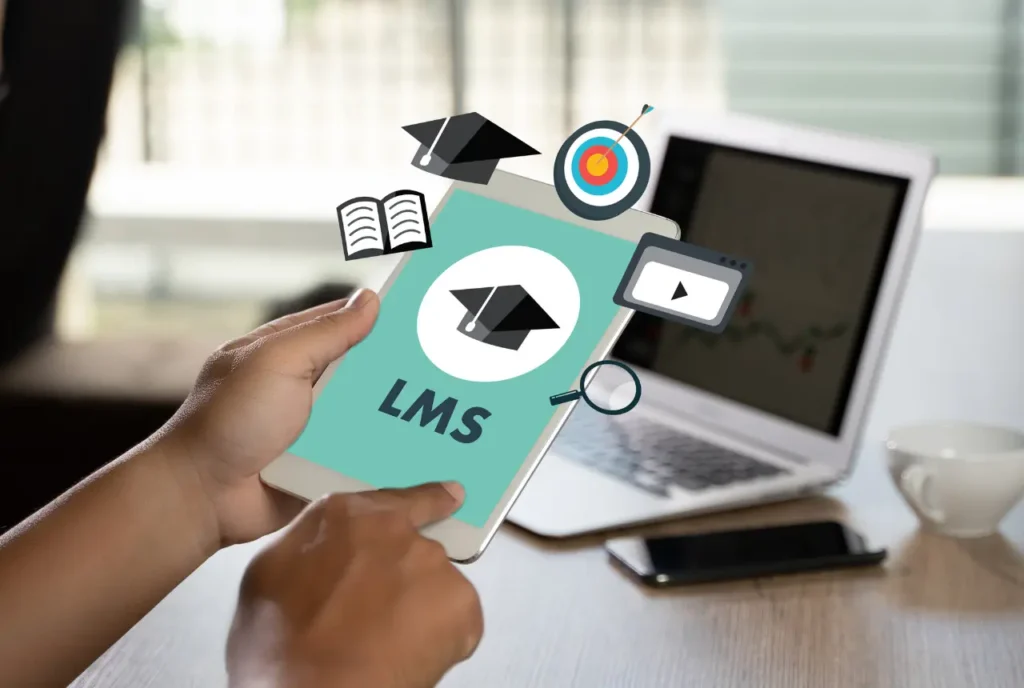![]()
The importance of technology in education can’t be overstated. It’s transformed the way we learn, how teachers teach, and even how schools operate.
As classrooms have gone digital, technology has shifted from just a helpful tool to a vital part of the learning experience for everyone involved.
In today’s digital age, it’s not just about using gadgets in the classroom—it’s about transforming the entire learning experience.
From personalized lessons that cater to individual needs to innovative ways of teaching that engage students like never before, technology is reshaping education in exciting ways.
As classrooms become more digital, the integration of technology is becoming essential, offering benefits that go far beyond traditional teaching methods.
In this article, we’ll explore five key benefits of technology integration in education that are revolutionizing the way we learn and teach. Trust us; you won’t want to miss out on these absolute godsend insights!
The Importance of Technology in Education
Benefit 1: Personalized Learning with Educational Technology

Thanks to technology, we can now make learning more personalized. Teachers can adjust lessons to fit each student’s unique needs, interests, and how they like to learn.
This isn’t about one lesson for everyone; it’s about customizing the pace and content to help each student understand better and do well academically.
There are several tech tools that help make personalized learning possible.
Adaptive learning platforms like BJYU’S and Upgrad use smart technology to figure out what each student is good at and where they need help.
Then, they change the lessons to fit each student’s needs. Technology integration in education has helped students with interactive learning activities which allow students to learn at their own speed.
Plus, Edtech helps teachers use different teaching methods like choice boards or flexible groups to meet the needs of all their students.
Some fun tech tools like Kahoot! and Quizlet turn learning into games with quizzes and challenges. This makes learning more fun and helps students remember important information.
Virtual reality (VR) tools, let students dive into virtual worlds to better understand complex ideas and spark their curiosity.
The importance of technology in education has enhanced personalized learning is great for getting students excited and involved in their education.
When lessons are tailored to them, students are more interested and motivated to learn which helps build their confidence and belief in themselves.
Moreover, it encourages a positive attitude towards learning, making students eager to keep learning and exploring new things.
Benefit 2: Enhanced Collaboration and Communication

Technology is an absolute deal breaker when it comes to helping students, teachers, and parents work together and communicate easily.
It breaks down old-school barriers and lets everyone interact smoothly, no matter where they are.
In our world today, being good at teamwork and communication is super important for doing well in school and later in jobs.
Technology gives us the tools to do group projects, talk to each other, and learn how to communicate effectively, getting students ready for what lies ahead.
Teachers can share lessons, give out assignments, offer feedback, and get discussions going, making learning more interactive and engaging.
Communication apps like Microsoft Teams, Slack, and Google Classroom, teachers, and parents chat in real-time, creating a sense of community and making it easier to provide personalized help and guidance.
EdTech makes it simpler for students to team up on projects and chat with each other.
Collaborative tools like Google Docs and Excel sheets let students work together on assignments and projects at the same time, boosting teamwork and critical thinking.
EdTech makes things easier and improves student communication.
It allows students to interact with others from different backgrounds, share their ideas, and receive criticism from classmates, professors, and international experts.
This global learning community prepares students for a world where connections count by increasing their cultural awareness, empathy, and respect for diversity.
Technology-based communication and teamwork improve digital skills, adaptability, and resilience, equipping kids for today’s fast-paced world.
Benefit 3: Improved Access to Educational Resources

Technology has changed the game when it comes to getting hold of learning materials.
Instead of just relying on textbooks and classroom resources, we now have a whole world of digital content at our fingertips.
Online platforms, educational databases, and open educational resources (OERs) give students and teachers access to a wide variety of high-quality learning materials that can be personalized to fit different learning styles, interests, and abilities.
This shift to digital resources means that learning can be more tailored, relevant, and accessible to everyone, no matter where they are or what challenges they may face.
Educational apps for students such as Coursera, Khan Academy, and edX offer a wide choice of courses and tutorials to let students pursue their hobbies and study outside the classroom.
Many academic publications and research papers are available on JSTOR, EBSCOhost, and ProQuest, helping students build research and critical thinking abilities.
Technology is a lifeline for students who live far from schools or have disabilities.
Online learning platforms, video conferencing tools, and digital resources make it possible for these students to connect with teachers, classmates, and learning communities, helping them feel included and supported.
Screen readers, speech-to-text software, and adaptive learning platforms help disabled students access and engage with digital content independently, enhancing their learning and well-being.
Technology isn’t just about helping students in school; it’s also about promoting lifelong learning.
With so many educational resources and tools available online, people can continue learning and growing throughout their lives.
The digital shift in education encourages self-driven learning, curiosity, and exploration, empowering people to adapt, learn, and seize new opportunities in a changing environment.
Benefit 4: Engaging and Interactive Learning Experiences

The impact of technology on learning has completely changed the education system by making it more fun, interactive, and hands-on than traditional methods.
Instead of just sitting and listening to lectures or reading from textbooks, today’s students get to play educational games, use simulations, watch videos, and interact with digital whiteboards.
These dynamic learning experiences grab students’ attention, spark their curiosity, and get them actively involved in the learning process.
Not only are these new ways of learning more enjoyable for students, but they also help them understand, remember, and use what they’ve learned better.
Multimedia content like videos, animations, podcasts, and interactive eBooks make learning more engaging by presenting information in different ways that suit various learning styles.
Technology integration in education allows teachers to create lively and collaborative learning spaces where students can interact with digital content, join in discussions, and work on activities that help them understand the material better.
Technology challenges students to analyze, evaluate, and apply what they learn to real-world problems, developing critical thinking and problem-solving skills.
Project-based, problem-based, and case studies encourage students to think critically, brainstorm, research, and solve practical challenges.
Benefit 5: Assessment and Data-Driven Instruction

The importance of technology in education flourishes when it comes to assessing students and collecting valuable data to understand how they’re doing.
Online quizzes, learning management systems (LMS), and data analysis tools give teachers immediate and useful information about students’ performance, engagement, and learning outcomes.
This helps teachers identify where students might be struggling and allow them to adjust their teaching methods to better suit each student’s needs, ultimately helping students succeed academically.
Technology-based assessment and data-driven education allow educators to use evidence-based and continuously improving methods.
This optimizes teaching and learning, student engagement and retention, and academic success. Students are more successful, satisfied, and committed to lifetime learning.
Conclusion
The importance of technology in education is clear when we see how it boosts student learning, empowers teachers, and elevates the overall quality of education.
Whether it’s tailoring lessons to fit each student, promoting teamwork, providing more learning resources, making learning fun and interactive, or using data to guide teaching methods, technology truly transforms the learning experience.
As we continue to embrace the importance of technology in education and explore its potential, it’s vital to stay open to new ideas and adapt to the needs of today’s learners.
By harnessing technology to create engaging, inclusive, and effective learning environments, we can ignite curiosity, foster a passion for lifelong learning, and equip students with the skills they need to succeed in our ever-changing world.










